In this article, we’ll explore two popular Japanese noodles—soba and udon—and discuss how they are made, their differences in flavor, and the best ways to enjoy them.
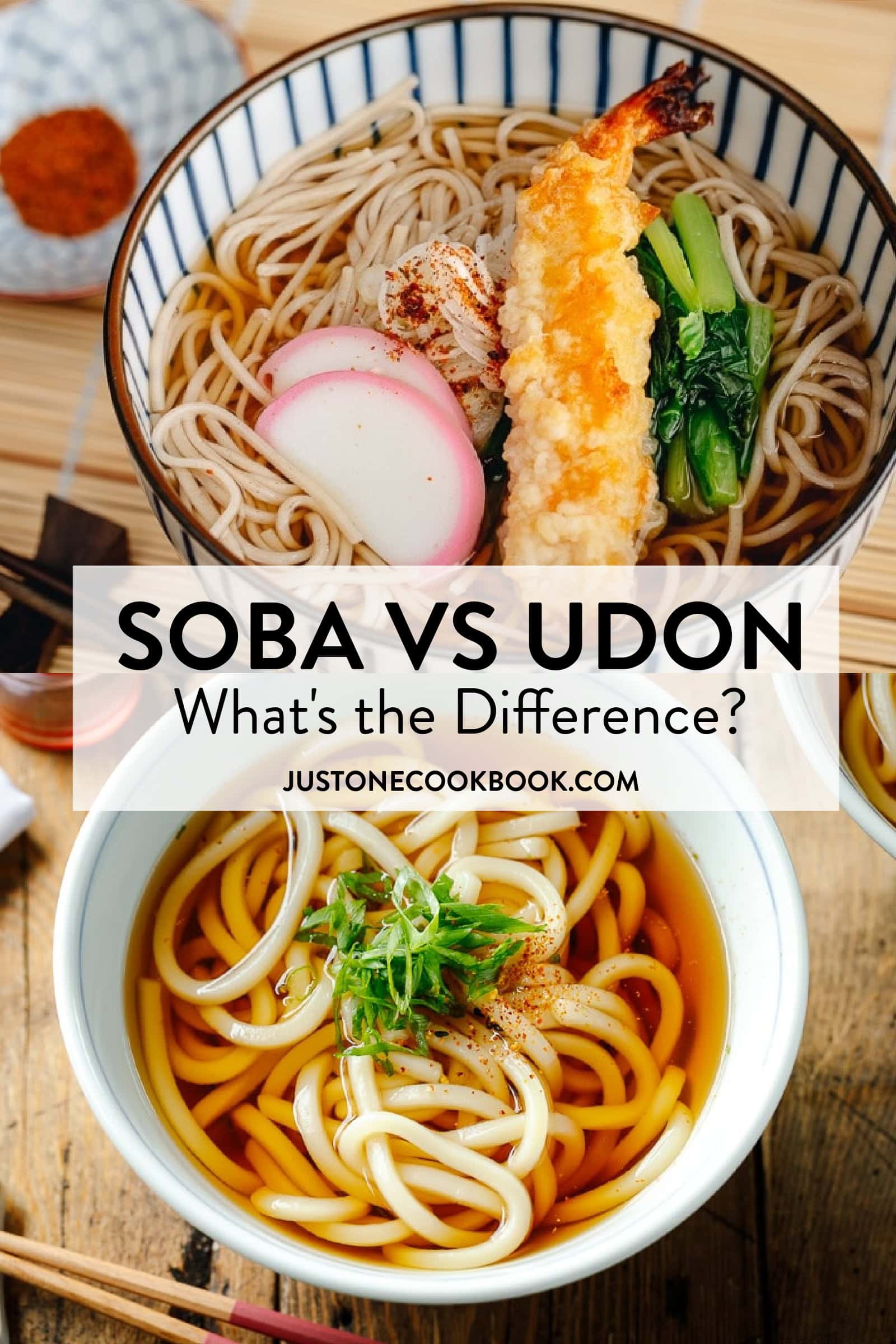
Both soba and udon are iconic Japanese noodles with deep cultural roots. Although they can be prepared in similar ways, their textures and flavors set them apart.
If you’ve ever wondered whether to choose soba or udon for your next meal, this guide will walk you through their key differences and the best ways to enjoy each.
What are Soba Noodles?
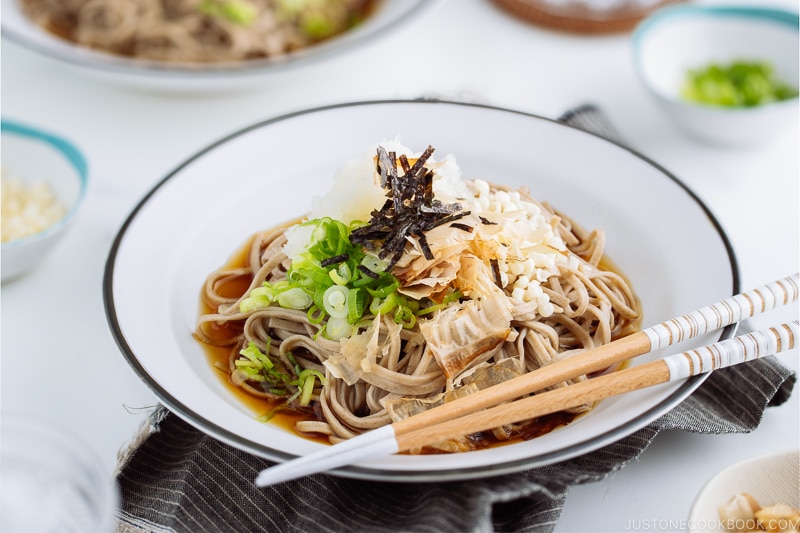
Soba noodles (そば or 蕎麦) are thin, delicate noodles made from buckwheat flour or a blend of buckwheat and wheat flour.
It is also worth mentioning that in Japanese, “soba” (そば) is a broad term for noodles. Dishes like Yakisoba (Japanese Stir-Fried Noodles) or Okinawa Soba use different types of noodles, not buckwheat. However, in most cases, “soba” refers specifically to buckwheat-based noodles.
In Japan, people enjoy soba noodles either chilled with a dipping sauce or served in a hot dashi-based soup broth made from kombu and bonito flakes. Both preparations are popular year-round.
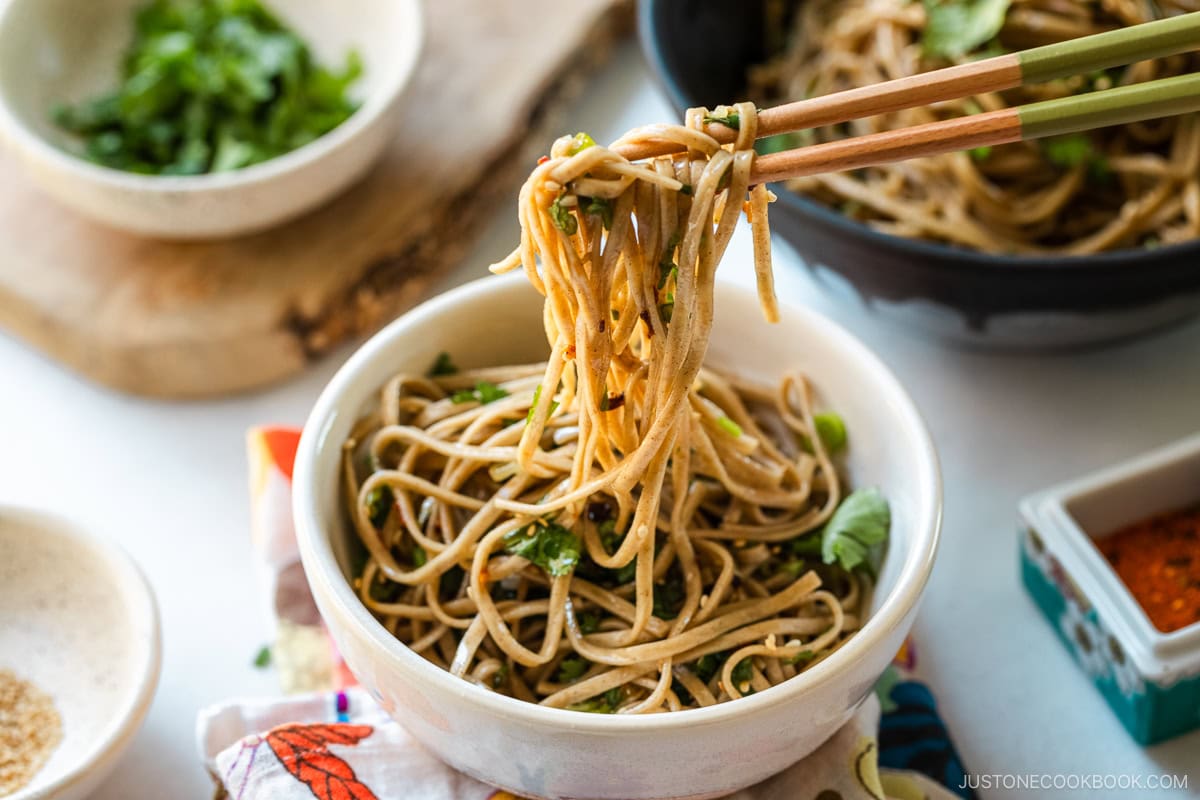
Characteristics of Soba Noodles
- Thin and delicate, yet sturdy enough to hold their shape.
- Slightly shorter than spaghetti, making them easy to slurp.
- Firm with a slightly grainy texture, thanks to buckwheat flour.
- Earthy and nutty in flavor, offering a rich, distinctive taste.
Best Ways to Enjoy Soba
To fully appreciate high-quality soba, avoid overpowering it with bold seasonings, sauces, or toppings. Instead, let the subtle nutty notes of buckwheat take center stage. Soba pairs beautifully with light broths, simple dressings, and fresh garnishes like green onions and shredded nori.
Simplicity is key to enjoying soba noodles. This principle is reflected in this Soba Noodle Salad and the traditional Toshikoshi Soba, served on Japanese New Year’s Eve.
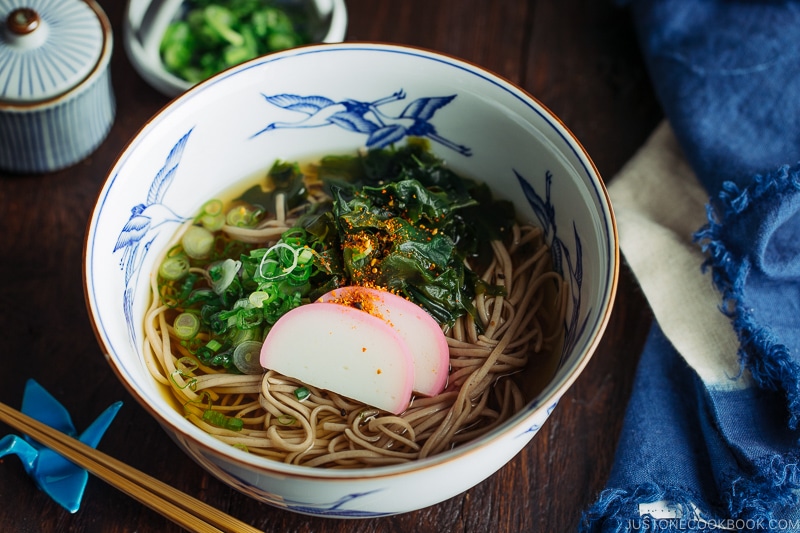
Soba Noodles: A Healthy Choice for Your Diet
Soba noodles are not only delicious but also packed with nutrients that support a balanced diet:
- Rich in protein and fiber – Helps keep you full and supports digestion.
- High in essential amino acids – A great plant-based protein source.
- Nutrient-dense – Buckwheat flour provides vitamin B, iron, and complex carbohydrates for sustained energy.
- Refreshing and restorative – Light yet satisfying, perfect for a nourishing meal.
- Energy-boosting – Ideal for maintaining stamina and overall well-being.
Since buckwheat is a gluten-free grain, it’s a great alternative for those who cannot consume wheat. Please note that soba noodles available outside of Japan are commonly made with a mixture of buckwheat and wheat flour to enhance elasticity and texture. If you’re gluten-intolerant, be sure to check the ingredient list and look for 100% buckwheat noodles, known as Juwari Soba (十割そば).
Where to Buy Soba Noodles?
Soba noodles are commonly sold dried. At Japanese or Asian grocery stores, you can also find fresh soba in the refrigerated sections and frozen soba in the freezer sections.
We recommend Shinshu Inaka Soba if you can find it at your local Japanese grocery store. Alternatively, you can also get common brands such as Hime Soba Noodles, Hakubaku Organic Soba, or Eden Foods Soba (100% buckwheat and gluten-free).
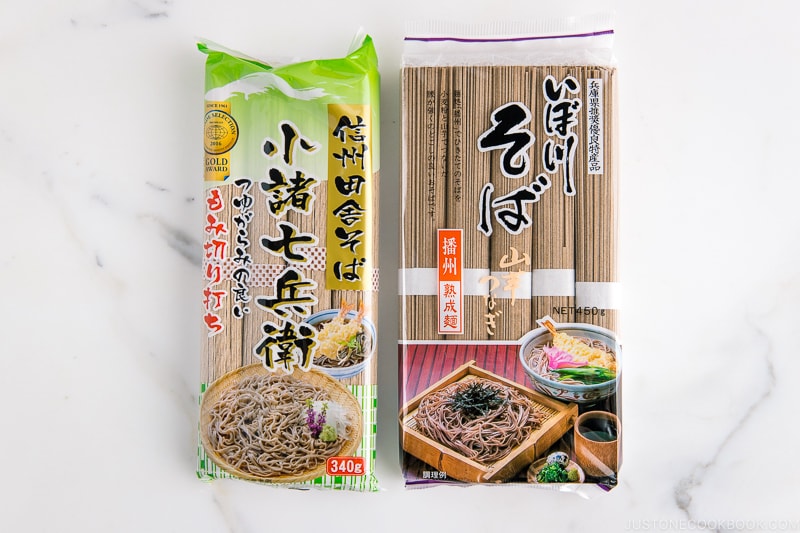
What are Udon Noodles?
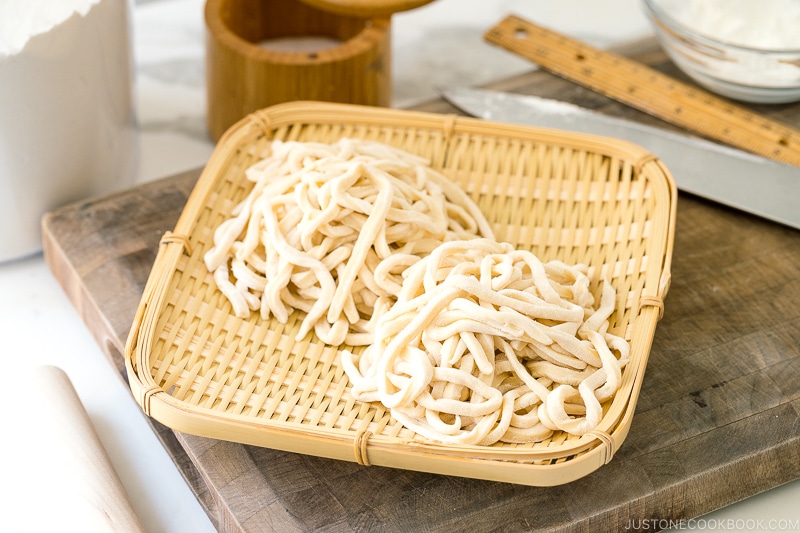
Udon noodles are made from wheat flour, water, and salt and are prized for their thick, glossy texture and creamy white appearance. With a soft yet pleasantly chewy bite, they provide a satisfying base for a variety of dishes.
Many Japanese people consider udon a comforting choice, as its soft, soothing texture makes it easy to digest.
Characteristics of Udon Noodles
- Soft yet satisfyingly chewy – Offers a hearty, comforting bite.
- Mild flavor with a springy, doughy texture – Perfect for absorbing broths and sauces.
- Incredibly versatile – Works well in hot soups, stir-fries, or chilled dishes.
- Bouncy and fresh – Especially noticeable when handmade or freshly prepared.
Best Ways to Enjoy Udon
Thanks to their neutral flavor, udon noodles readily absorb bold sauces and seasonings while pairing well with various toppings.
Some popular udon dishes include Curry Udon, where the thick noodles cling to a savory spiced curry sauce, or Mentaiko Udon, featuring a rich, creamy sauce infused with spicy salted cod roe.
The thick texture and hearty nature of udon also make it a perfect choice for stir-fries like Yaki Udon and hot pot meals like Nabeyaki Udon. In Kagawa Prefecture, known as the “Udon Kingdom,” you’ll even find udon deep-fried into crispy noodle snacks.
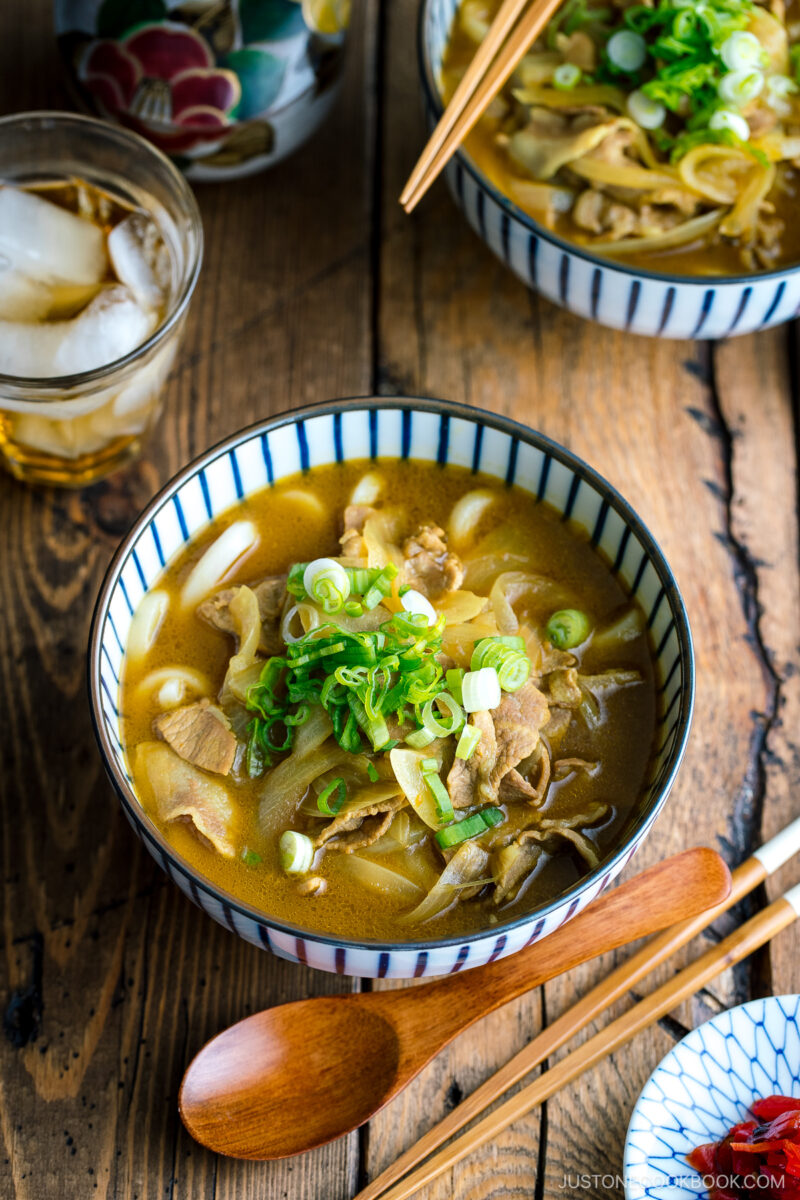
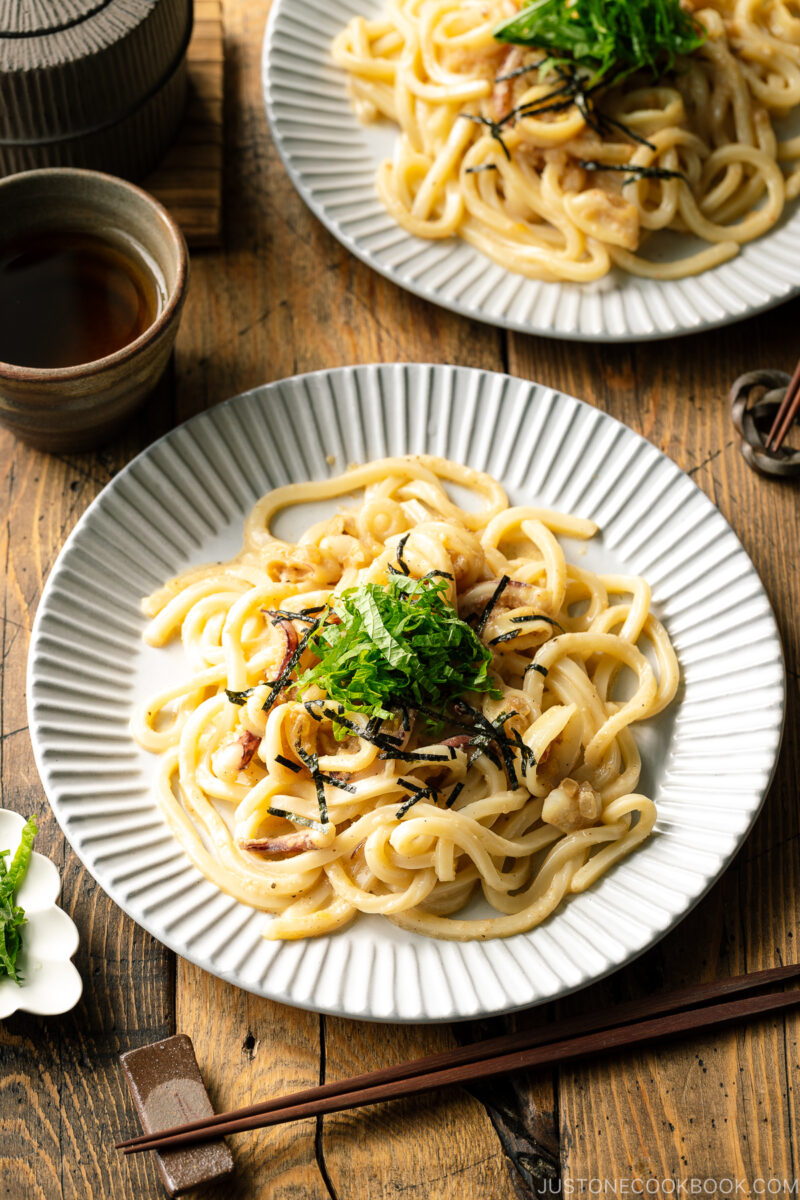
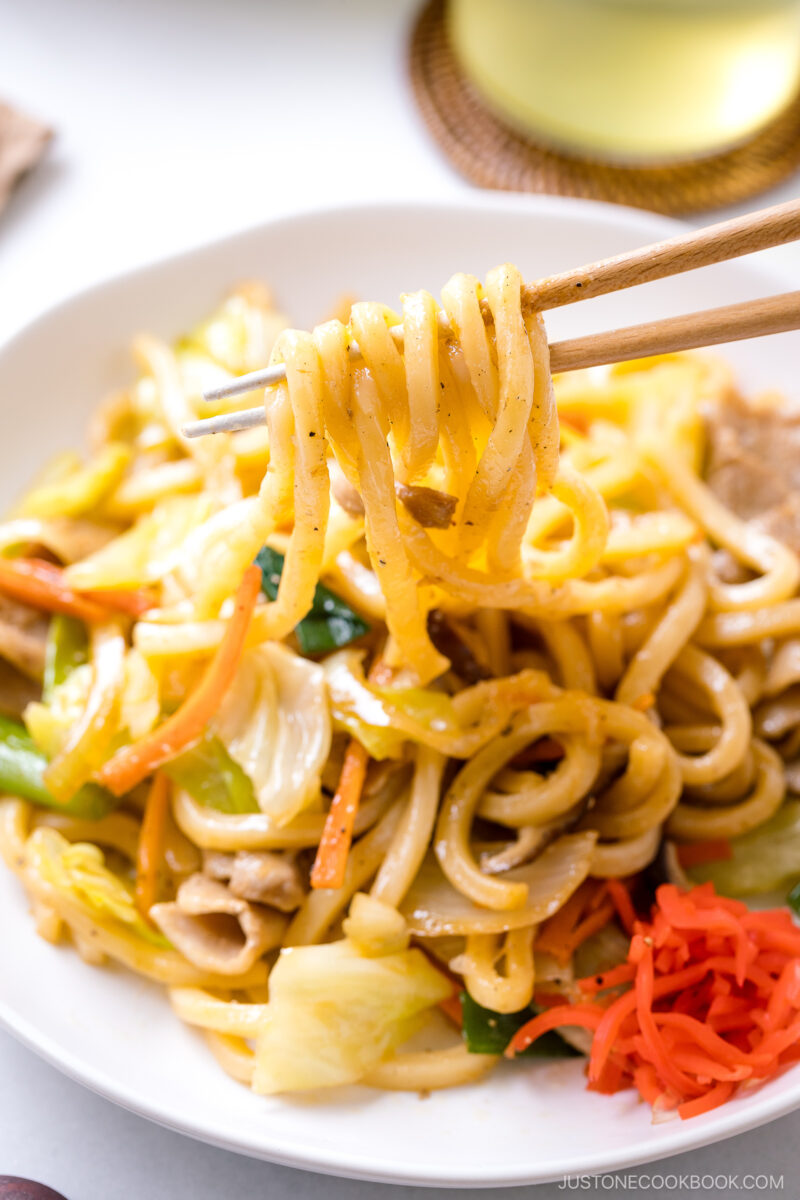
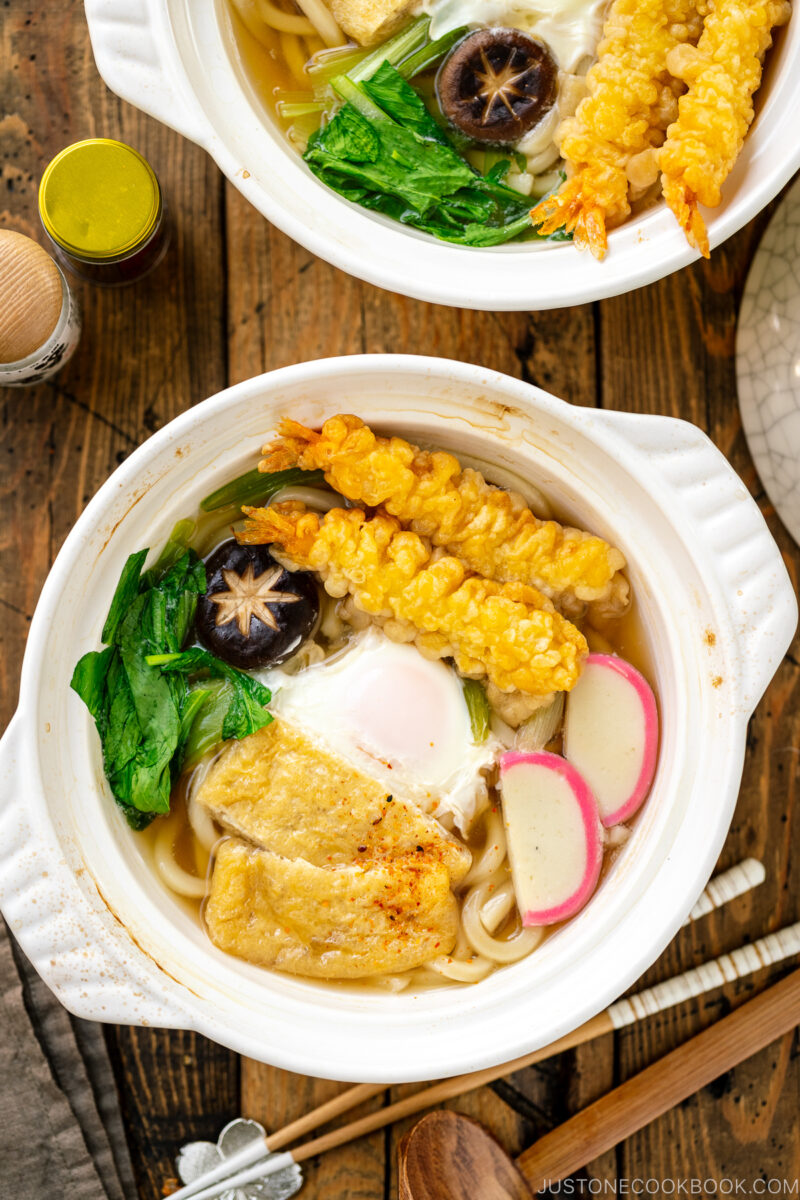
Where to Buy Udon Noodles?
Udon noodles are available dried, fresh, or frozen. You can find them at Japanese and many Asian grocery stores, as well as select major American supermarkets. While dried noodles are a convenient option, fresh or frozen noodles offer the best texture.
We recommend the frozen Sanuki Udon, which can be found in the freezer section of Japanese supermarkets and some Asian grocery stores.
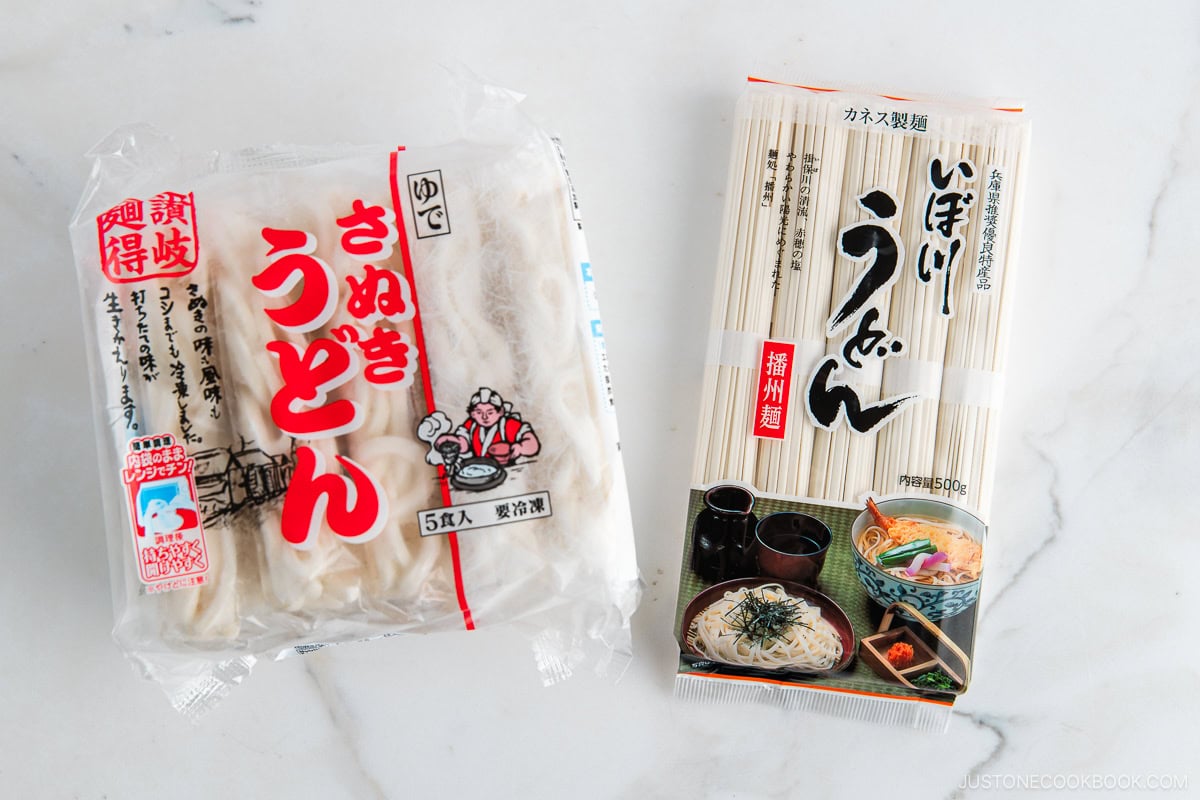
Wish to try your hand at making your own noodles? Try Nami’s Handmade Udon Noodles next.
Classic Soba and Udon Dishes in Japan
Noodle shops in Japan never limit themselves to creative ways of serving soba and udon noodles. While both noodles can be prepared in distinct styles, there are also representative dishes where soba and udon are enjoyed in similar ways.
Here are just a few classic soba and udon dishes that have been enjoyed for generations:
1. Zaru Soba and Zaru Udon (Cold)
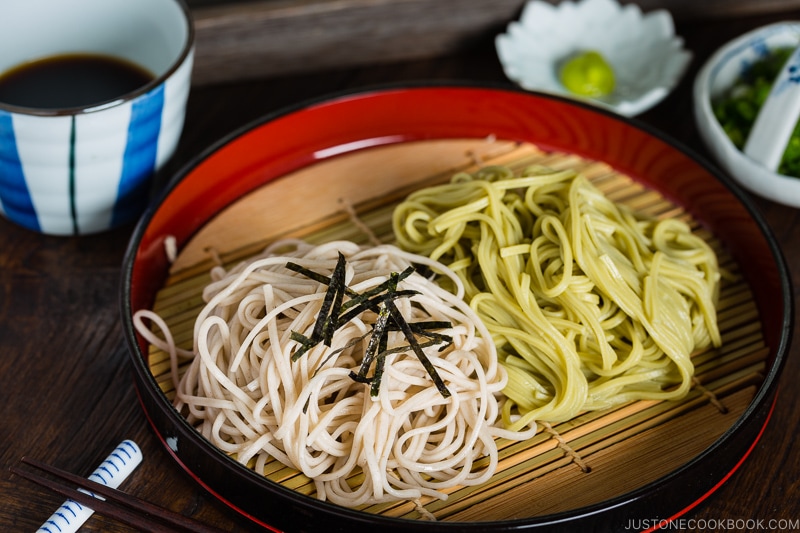
These refreshing cold noodle dishes are go-to staples in Japan during the summer! They’re best enjoyed with a flavorful tsuyu dipping sauce and topped with shredded nori and chopped scallions.
2. Kake Soba and Kake Udon (Hot)
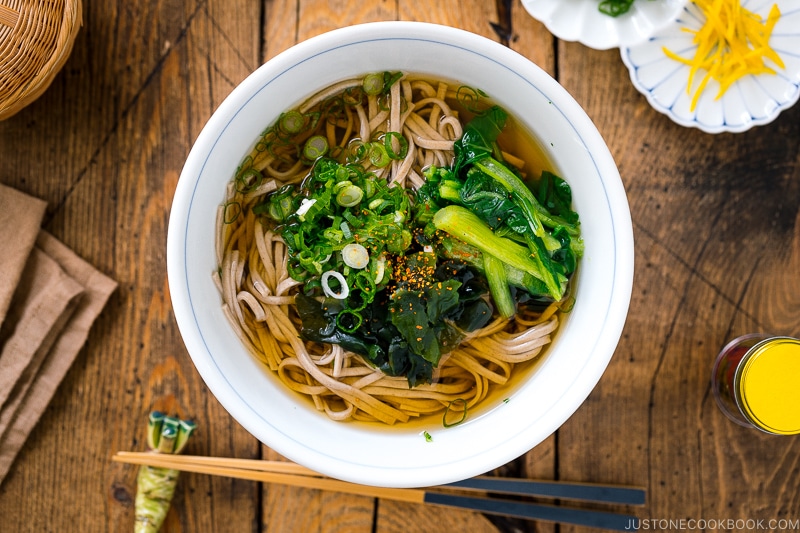
Kake soba and kake udon are served hot in a simple noodle soup with a broth made from dashi, soy sauce, and mirin. They are typically topped with thinly sliced green onions and sometimes a piece of kamaboko (fish cake), tempura, vegetables, or egg.
This minimalist preparation highlights the texture and flavor of the noodles and broth.
- Soba Noodle Soup (Kake Soba)
- Udon Noodle Soup (Kake Udon)
3. Tanuki Soba and Tanuki Udon (Cold or Hot)

Tanuki soba or tanuki udon is topped with crispy tempura bits called tenkasu and can be enjoyed hot or cold.
4. Kitsune Soba and Kitsune Udon (Hot)
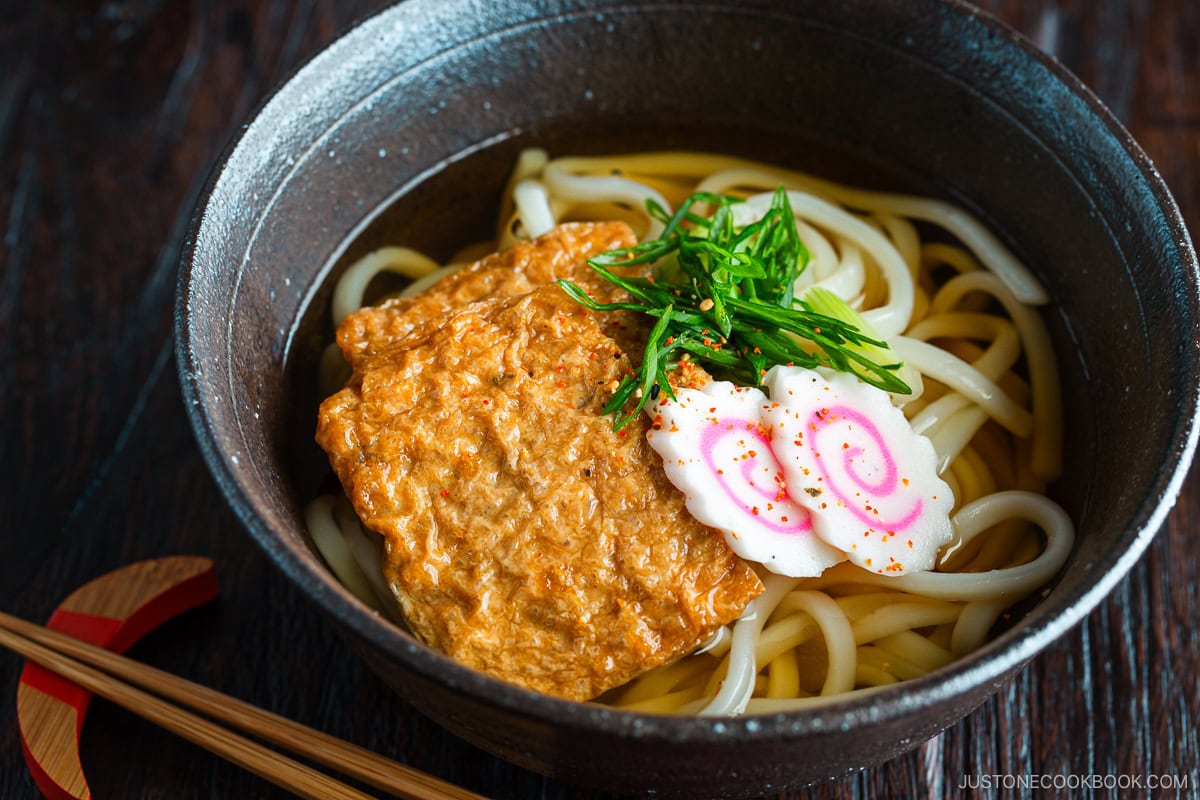
Kitsune soba and kitsune udon feature hot or cold noodles topped with a thin sheet of deep-fried tofu, known as aburaage or inariage.
Whether you prefer the light, nutty flavor of soba noodles or the thick, chewy texture of udon, there’s so much to discover about these beloved Japanese noodles.
If you enjoy noodles, read Your Guide to Japanese Noodles & Delicious Recipes and explore our Best Authentic Japanese Udon Noodle Recipes.
Editor’s Note: This post was originally published on August 3, 2018, and republished with fresh, more insightful content on April 1, 2025.




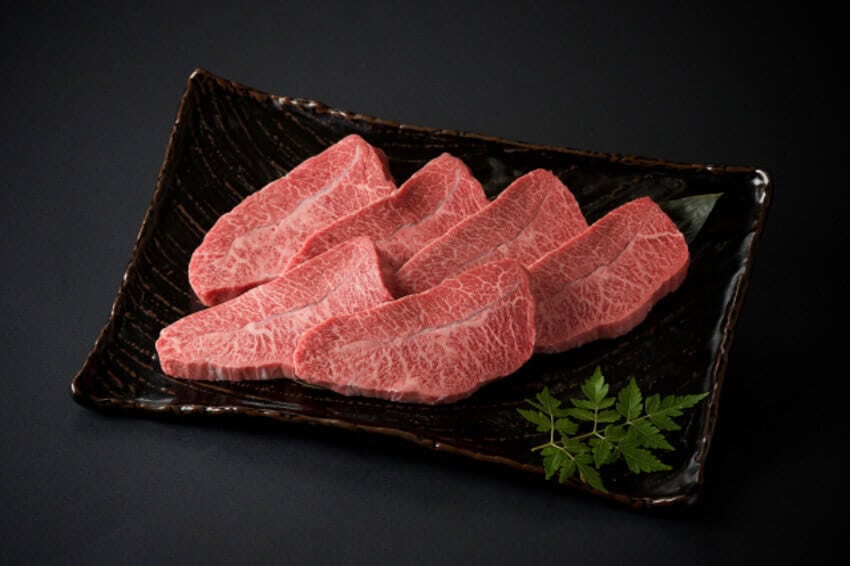


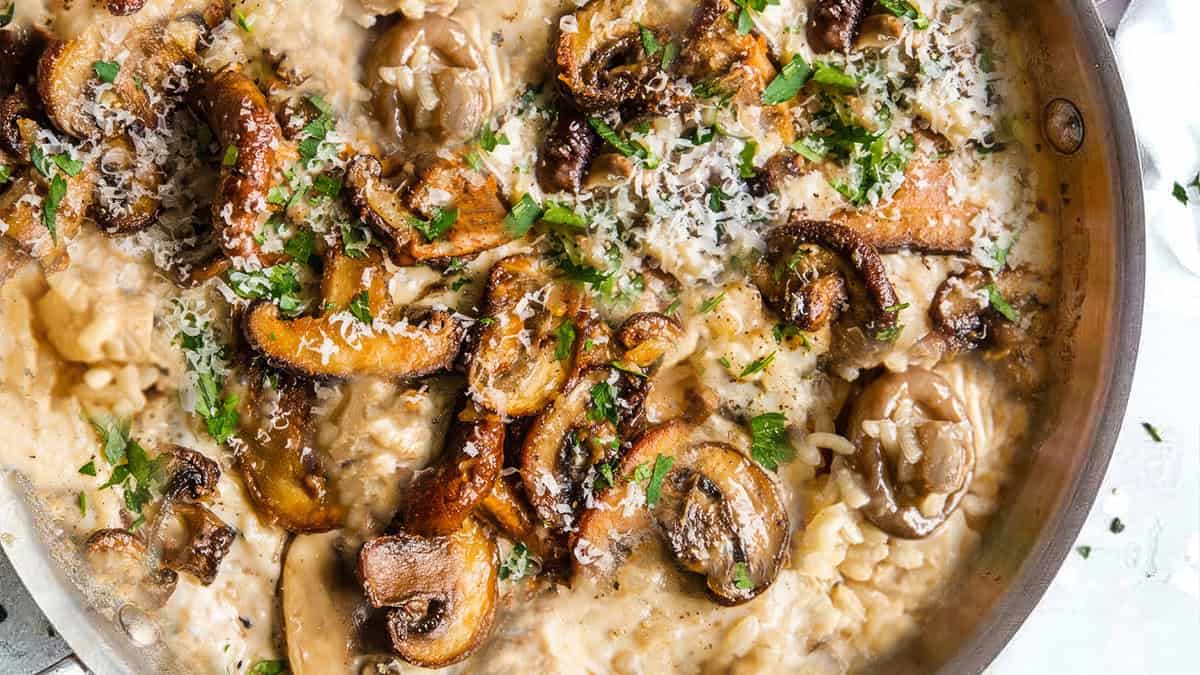



 English (US) ·
English (US) ·